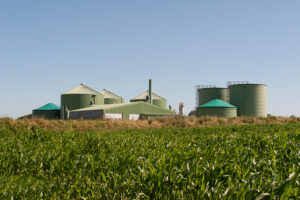EBA: From plant to grid – navigating biomethane injection

However, the current status is set to change thanks to the new Hydrogen and Decarbonised Gas Package.
If implemented correctly, the new set of measures will soon remove barriers to injection and unlock access to markets, according to the European Biogas Association (EBA).
The EBA, within the framework of the GreenMeUp project, has evaluated regulations regarding grid connection cost sharing, gas quality, metering systems, and injection fees in 28 European countries, which were analysed to understand what it takes today to move biomethane from the plants to the gas pipelines.
Greening gas grids with biomethane
Biomethane plants can connect to either a grid or operate independently. According to the EBA’s database for 2022, 75% of biomethane plants today are connected to the grid (58% to distribution and 17% to transmission grids).
Multiple factors are significantly impacting the injection of biomethane into the gas grid, including enabling legislative frameworks, gas quality standards, the application of injection fees, or the negotiation of cost-sharing agreements between grid operators and biomethane producers.
Regulations with respect to enabling grid connection for biomethane plants are mostly addressed at the national level, and diverse approaches exist between countries.
Additionally, there are two types of gas grids in Europe: transmission grids, managed by Transmission System Operators (TSOs), and distribution grids managed by Distribution System Operators (DSOs).
The transmission grid comprises high-pressure pipelines responsible for transporting gas across extensive distances.
In contrast, the distribution grid is composed of low-pressure pipelines designed to supply gas to residences, commercial establishments, and industrial facilities within a localised area.
Grid injection checklist: cost-sharing, gas quality, and injection fees
Grid connection costs, referring to the cost of setting up injection stations and constructing gas pipelines from biomethane plants to the existing infrastructure of the gas network, are one of the most important factors influencing biomethane’s injection.
The expense associated with grid connection is impacted by the project's location, the plant's size and capacity, and the existing network infrastructure. This often necessitates negotiation regarding cost-sharing to undertake such projects and varies among EU countries.
10 out of 28 (EU+UK) countries have grid connection costs shared between biomethane producers and grid operators. France and Germany, for instance, split the connection costs in percentages between the biomethane producer and the grid operator for constructing pipelines from the biomethane plant to the grid injection point. In France, the grid operator covers 60% of it, in Germany, 75%, and the biomethane producer covers the rest.
In countries like the Czech Republic and Lithuania, there is no grid connection cost sharing, leading to the biomethane producer bearing the entire financial burden for connecting to the gas grid.
In addition to the cost of constructing pipelines to the injection point, some countries also charge an injection fee, which aims to cover the installation and maintenance of metering and measurement systems, grid access charges, and costs for ensuring gas quality.
This fee is applicable in 11 out of the 28 countries analysed but this changes depending on the country.
In Sweden, the height of the injection fees is determined by the connection cost covered by the biomethane producer. If the biomethane producer covers the total cost of connecting to the gas grid, they do not pay any injection fees.
In Belgium, the injection fees are approved by the relevant regulator for the TSOs and DSOs.
In Latvia, an injection fee is charged by the transmission system operator to the biomethane producer.
When it comes to gas quality measurement and metering systems, it is important to first draw a clear distinction between the two. Gas quality measurement is the process of determining the physical and chemical properties of biomethane, such as its composition and impurities.
The metering system is responsible for accurately measuring the volume and energy content of the biomethane being injected into the gas grid. Both sets of information are used to ensure that biomethane meets the set standards of the gas networks and for billing pruposes. Grid operators are mostly responsible for this aspect of biomethane injection.
Unlocking Europe's energy independence through grid access optimisation
The projected growth in biomethane production offers significant potential to meet Europe’s gas demand (up to 62% by 2050 according to EBA Statistical Report 2022), while decreasing reliance on imports.
Achieving this potential requires streamlining processes and regulations to facilitate smooth grid access and encourage the widespread substitution of natural gas in our energy infrastructure. Prioritising these actions can accelerate the sustainable energy transition in Europe.
This article was written by George Osei Owusu, project and technical officer at the EBA


























